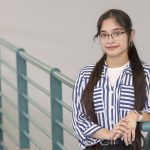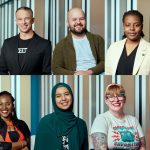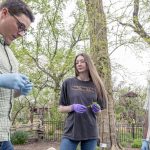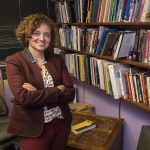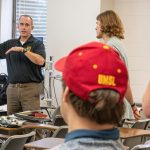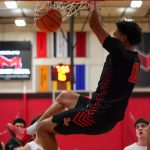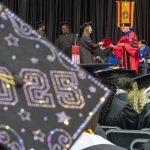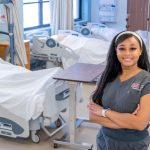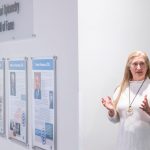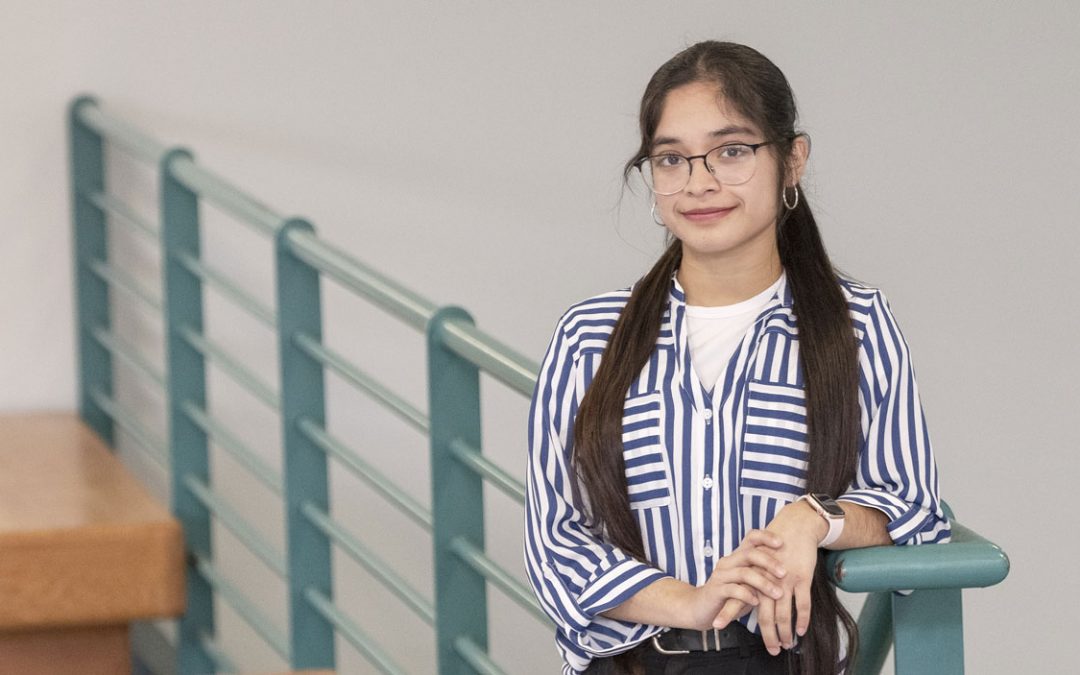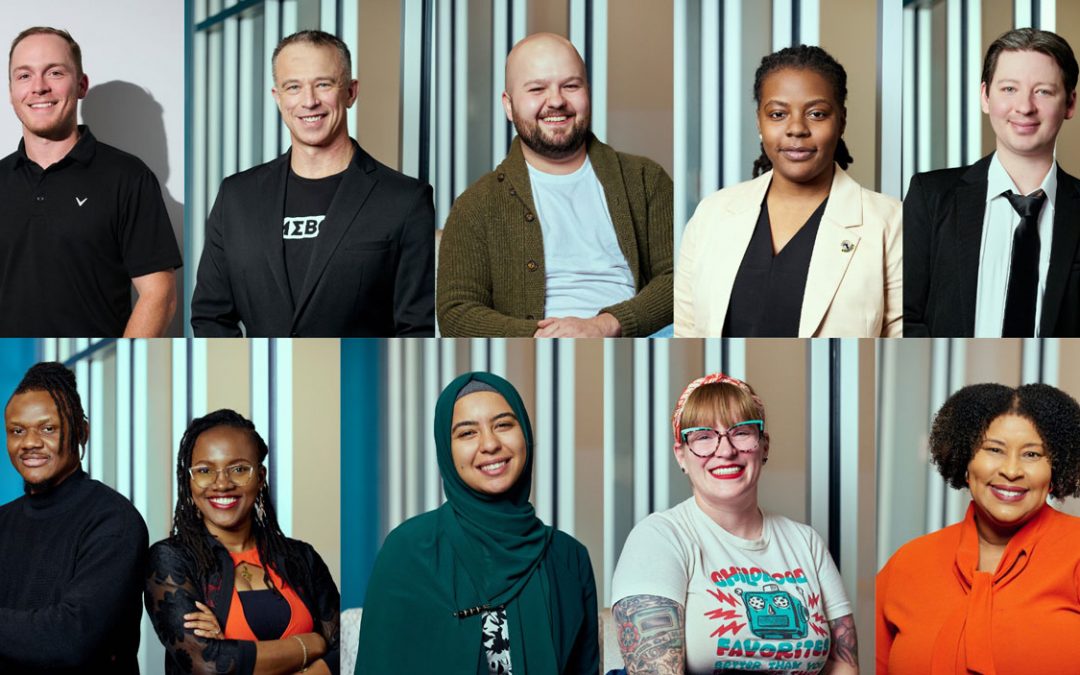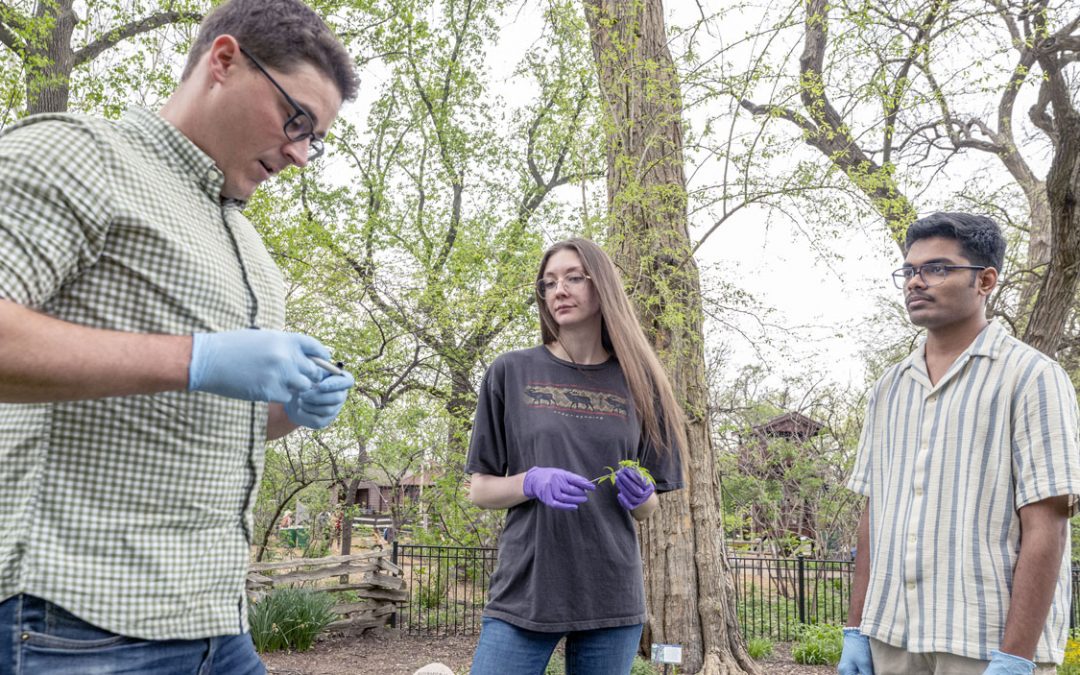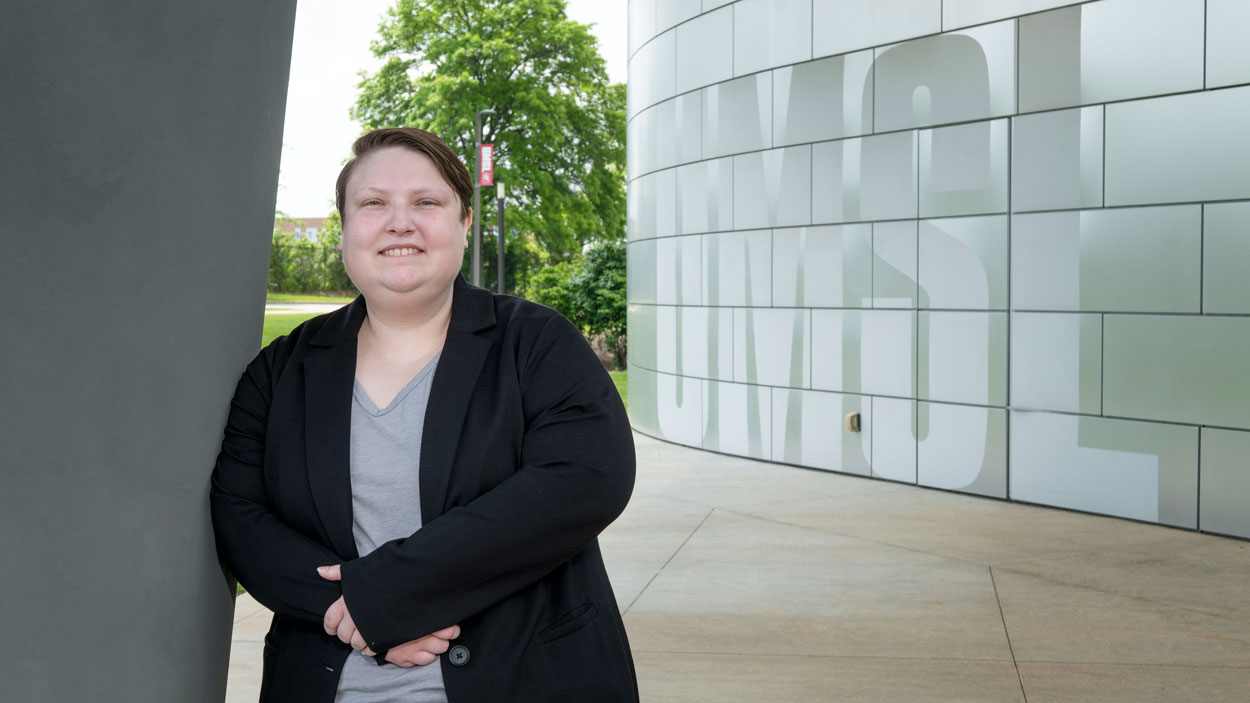
Kel Gruber earned her master’s degree in computer science and is completing an internship at the Geosciences and Artificial Intelligence Applications Lab, located at NGA’s Moonshot Labs in T-REX. (Photos by Derik Holtmann)
The geospatial ecosystem appears flush with opportunity in St. Louis with startups continuing to sprout and grow alongside the National Geospatial-Intelligence Agency’s new $1.7 billion West Campus, set to open this September just outside downtown.
Kel Gruber would seem well positioned to take advantage when she hits the job market later this year. She’s been training at the intersection of software engineering, computer vision and geospatial technology while earning her master’s degree in computer science from the University of Missouri–St. Louis, and she will spend the summer completing an internship at the Geosciences and Artificial Intelligence Applications – or GAIA – Lab located at NGA’s Moonshot Labs in T-REX.
“It would be cool to work at NGA or a different organization that works with them,” said Gruber, who took part in commencement earlier this month. “There are a lot of really great ones in the St. Louis area that I’ve been getting to learn about as part of my internship. Since we work out of T-REX, I get to see some of the different events and different projects that are going on there. I think there are a lot of interesting problems.”
Gruber had been looking to unlock more career options when she made the decision to go back to school in August 2023. At the time, she was doing administrative work – including helping coordinate payroll and benefits – at Rottler Pest Solutions.
“It was a great place to try different things,” Gruber said. “It was a small business, so a lot of times there are a lot of things that need to get done. If you have the interest or the initiative to say, ‘I want to work on this,’ they’re like, ‘OK, how can we make this better?’”
That included working to script and automate some tasks using her computer. That sparked an interest in learning more about computers and how they worked, and she began looking into computer science programs in the St. Louis region, eventually settling on UMSL.
That might have seemed far afield from Gruber’s years as an undergraduate, studying textiles at the Kansas City Art Institute. But she insists it hasn’t been as big a leap as it appears.
“I’ve always liked to understand how things are made, so when I started school, I was really interested in textiles and how textiles were made,” said Gruber, who completed her bachelor’s degree in 2016. “That was a huge interest, and when I got the opportunity to pursue it, I did. But I always had an interest also in computers and how we use computers to improve our lives, as a tool to help you achieve more complex solutions and projects. In my undergrad, I actually worked a lot with computers in doing my art. I worked on computerized looms and a lot of software that was used and designed for helping artists.”
There was still a lot of technical training she needed in coding, plus some math and science requirements she lacked, so Gruber’s original plan was to pursue a second bachelor’s degree. That changed when she met Professor Sanjiv Bhatia, who encouraged her to directly explore the master’s program and provided her a list of courses that would give her the background she needed beforehand to be successful.
Gruber took it from there.
“It’s our job to encourage students, but they have to do the job,” Bhatia said. “We are not going to give anything to them, so they have to fill the holes in the background. She is very smart, hardworking and creative. I know, in my classes, she has done very, very well.”
That included two courses in computer vision, a field of artificial intelligence in which computers learn to “see” and interpret images and videos similar to the way humans do.
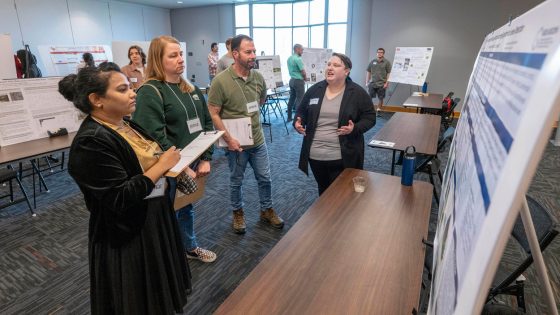
Kel Gruber talks to the judges at this spring’s Graduate Research Fair. Gruber presented
her work developing a machine learning algorithm that can be used to detect levees in LiDAR images of the Earth.
In one of them, Bhatia requires each student do a semester-long individual project, and Gruber decided to incorporate her background in textiles – specifically her hobby of cross stitch – into the assignment. She created a program that allowed a computer to analyze a picture and create a cross stitch pattern to replicate it, including the use of particular colors of thread in specific quantities.
“I’m encouraging her to commercialize it,” Bhatia said. “She has done a great job.”
Gruber has also had the opportunity to put her computer vision skills to use as an intern in the GAIA Lab, working and learning from Director Dawn King, an UMSL alum and a geodetic earth scientist with NGA. Gruber’s been developing a machine learning algorithm that can be used to detect levees in LiDAR images of the Earth. It has potential implications for predicting flood risk as well as emergency response.
She presented her research at last month’s Graduate Research Fair, where she received third place in the math, computer science and natural sciences category. It also served as a trial run for presenting at last week’s USGIF GEOINT Symposium at America’s Center in downtown St. Louis.
Gruber didn’t know much about geospatial technology before applying for the internship position at the GAIA Lab, but she’s since become active in the UMSL’s chapter of YouthMappers, which over the past year has been helping cultivate students’ interest in the technology while providing them opportunities to develop their skills in geographic information systems.
Both her internship and involvement with YouthMappers and the UMSL Computer Science Club have reinforced the wide range of possible career paths she might take, either in geospatial science or computer science more broadly.
“We have so many things we use in our daily lives that rely on software now, and there’s so many interesting applications – everything from someone who’s doing textile work to geospatial intelligence and trying to identify structures in the land,” Gruber said. “There’s definitely a wide breadth of different things you can do, and that’s something I’ve been exploring this year.”
Gruber will be ready to take the next step at the end of the summer. But there will also be things she misses from the past two years.
“There’s a little bit like, ‘Oh man, I’m leaving UMSL,’” she said. “I love the UMSL community. I’m excited to participate in any alumni events I can. But I’m also excited that there’s a lot of different applications for what I’ve learned and a lot of really cool problems to solve.”


